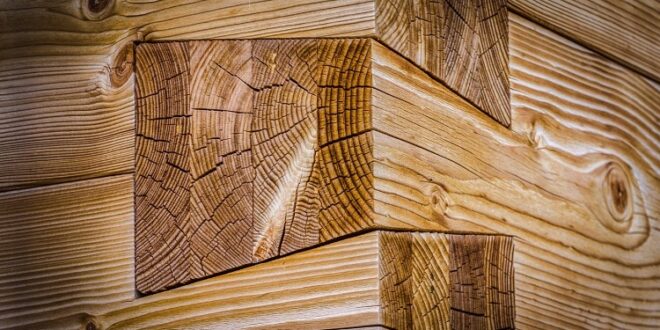Dovetail joints are an ancient and highly-respected design in woodworking. The joint is a solid, reliable system of joinery. It’s been around for centuries because it’s durable and long-lasting (when well made).
Not to mention, dovetails are attractive. The repeated pattern of tails and pins can even be hypnotizing.
To help you understand the ins and outs of these joints, we’ve created this short guide. Read on to learn everything you need to know about dovetails!
What Are Dovetail Joints?
First things first, what exactly are dovetail joints? Picture a small block of wood with a triangular wedge cut out of the side. Now, envision another, smaller block that fits perfectly inside the first one.
What you have is the longest-lasting joint known to man. The tapered wedge forces the two pieces together to stay firmly in place for eternity. This means that it’s nearly impossible to remove a dovetail joint without destroying the wood around it.
The woodblock part that does not have the wedge is the half-blind dovetail. Whereas, the version with the wedge is a through or full-blind.
How Are They Made?
Let’s dive into the finer details of how to make dovetail wood joints. Did you know you can make intricate joints, without using power tools?
Dovetails look best when cut by hand. That’s why you’re not likely to find them in mass production. Instead, they are more common in high-end craftsmanship.
The process starts by marking the area on the boards where the dovetail will go. The individual responsible for cutting them will also draw a line on the center of the panels, which will help with alignment.
The next step is to cut the pins and tails on either side of each joint. A dovetail saw would be ideal for this task, but you can also create nice-looking dovetails using a coping saw or even chisels. The result should be an angled cut with a flat bottom.
Now, you’ll need to fit the key (the piece that will fill up the space left by the angled pins). You can do so by gluing it into place or cutting it slightly oversized and pushing it in with force. The excess must be removed with a chisel before moving on.
Finally, you cut the joints into the end of the boards. This is done by marking 1/8″ from each side and cutting away from pins to tails until you reach the line. The key will also be cut flush with this process.
When to Use a Dovetail Wood Joint
Dovetail wood joints aren’t just for show! They serve a purpose and provide the strength needed to keep objects intact for many years.
Dovetails can also be an alternative to nails or screws to make something more decorative, like rustic mirrors or picture frames. You can also use them when building furniture, such as display cabinets or oak dressers.
Dovetails aren’t reserved for decorative items or exemplary woodworking projects. You can also use them to build doors, crates, or any other type of woodworking project. You can also choose to use marking gauges with TailSpin Tools instead of traditional dovetail tools.
Be a Part of Woodworking History
It’ll take some time, but you’ll be happy with the results. The dovetail joint is a staple in woodworking history, and once you make your first one, you’ll be a part of that!
Pro tip–Be careful not to overdo it by making too many dovetails in one area. If you do, the joint will weaken and become useless.
Finally, always take your time when working on exemplary woodworking projects, and if in doubt, ask for professional help!
History of the Dovetail Joint
Now that you know what a dovetail is, it’s time to learn how this universal joint came to be. One story claims they were invented in Jerusalem around 3,000 years ago when the Phoenicians cut dovetails into the wood of olive oil containers.
The dovetails found in Chinese furniture may be the oldest. A lot of historians seem to think so. However, there isn’t any solid evidence to back up the claim.
Unfortunately, wood pieces don’t always last over the centuries.
Miraculously, dovetail wood joints have surfaced in excavations of Egyptian furniture. The Egyptian pieces date back thousands of years!
There are also claims that the Romans were the first to use dovetails for joinery with their bookcases and cabinets that used wooden pins instead of half-blind dovetails. One theory claims that Roman cabinet makers would use dovetails to emulate the Chinese known for their fine craftsmanship.
Secret Mitred Cut
It’s time to let you in on the most well-kept secret of all woodworkers! The secret mitred dovetail joint. It uses the basic concept of the half-blind dovetail, but it’s refined and much more robust.
A mitred dovetail is a sophisticated form of a through cut. It uses a particular shaping of the corner, which you can only do by hand. No power tools here.
We suggest using a mitred cut if you’re making a musical instrument. The instrument will instantly have a unique appeal and timeless style. You’ll also be guaranteeing a sturdy joint, which is excellent for instruments you’ll be playing a lot!
Try Cutting Dovetail Joints
This article has covered everything you need to know about dovetail wood joints. Go ahead and try the DIY woodworking technique in this article, and see what you can create.
If you don’t have access to large machinery or a workshop, consider using handtools. Of course, if you want the look of dovetail joints without the work, you can call in the pros. A lot of professional woodworkers will be happy to oblige.
Are you ready for more tips like the ones you read in this article? Go ahead and check out the rest of our site!
 HammBurg Be informed with latest news, reviews, entertainment, lifestyle tips, and much more.
HammBurg Be informed with latest news, reviews, entertainment, lifestyle tips, and much more.




